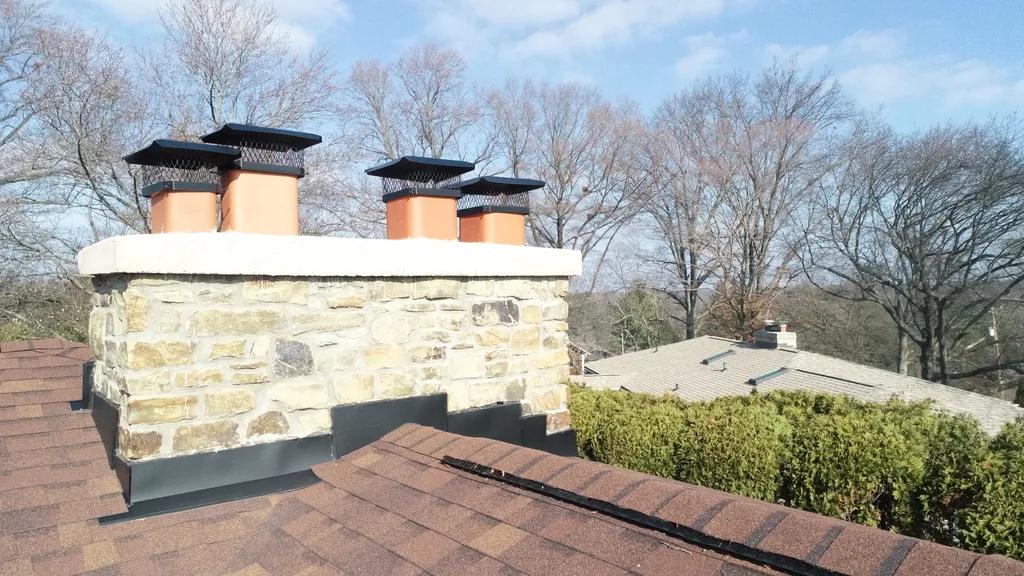Water seepage in chimney bricks can be a common and concerning issue for homeowners. This problem can lead to structural damage, mold growth, and decreased energy efficiency. In order to effectively address and prevent water seepage in chimney bricks, it is essential to have a thorough understanding of the causes and solutions. In this article, we will explore the various factors that contribute to water seepage in chimney bricks and provide insight on how to effectively address this issue.
Table of Contents
- Identifying The Causes of Water Seepage in Chimney Bricks
- Understanding The Impact of Water Seepage on Chimney Bricks
- Preventative Measures to Address Water Seepage in Chimney Bricks
- Q&A
- The Way Forward

Identifying The Causes of Water Seepage in Chimney Bricks
Water seepage in chimney bricks can be a common issue that homeowners face, leading to potential damage and costly repairs. Understanding the causes of this problem is crucial in effectively resolving it. One of the main reasons for water seepage in chimney bricks is damaged or missing chimney caps. When the chimney cap is not properly installed or is cracked, it allows water to enter the chimney structure, leading to leaks.
Another common cause of water seepage in chimney bricks is deteriorating mortar joints. Over time, the mortar between the bricks can wear away due to exposure to harsh weather conditions, allowing water to seep through the gaps. Improper chimney flashing, which is the metal or roofing material that seals the joint between the chimney and the roof, can also contribute to water seepage. It is essential to address these issues promptly to prevent further damage to your chimney and home.

Understanding The Impact of Water Seepage on Chimney Bricks
Water seepage in chimney bricks can have a detrimental impact on the structure of your chimney. Over time, the water can cause the bricks to deteriorate, leading to potential safety hazards and costly repairs. It is crucial to understand the signs of water seepage in chimney bricks so that you can address the issue promptly.
Some common signs of water seepage in chimney bricks include efflorescence, spalling, and mold growth. If you notice any of these signs, it is essential to take action to prevent further damage. Sealing the bricks, repairing any cracks, and improving the drainage around the chimney are all effective ways to mitigate the impact of water seepage. By understanding the causes and consequences of water seepage in chimney bricks, you can maintain the integrity of your chimney and ensure the safety of your home.

Preventative Measures to Address Water Seepage in Chimney Bricks
Water seepage in chimney bricks can lead to significant structural damage if not addressed promptly. One effective preventative measure is to ensure proper chimney maintenance, including regular inspections by a qualified professional. Additionally, installing a chimney cap can help prevent water from entering the chimney and causing issues with the bricks.
Another preventative measure is to waterproof the chimney bricks using a specialized sealant. This can help create a barrier against water infiltration and prolong the lifespan of the bricks. It’s also important to check for any cracks or gaps in the bricks and mortar, as these can provide entry points for water. By taking these preventative measures, you can help protect your chimney from water seepage and maintain its integrity for years to come.
Q&A
Q: What causes water seepage in chimney bricks?
A: Water seepage in chimney bricks can be caused by a variety of factors, including porous bricks, damaged mortar joints, and inadequate flashing.
Q: How can water seepage in chimney bricks be identified?
A: Signs of water seepage in chimney bricks may include damp patches on the walls, decaying mortar, efflorescence (white powdery residue), or mold and mildew growth.
Q: What are the potential risks of water seepage in chimney bricks?
A: Water seepage in chimney bricks can lead to structural damage, deterioration of the chimney bricks, and even safety hazards such as chimney fires or carbon monoxide leaks.
Q: How can water seepage in chimney bricks be prevented?
A: Preventative measures for water seepage in chimney bricks include regular chimney inspections, repairs of damaged bricks and mortar, installation of proper flashing, and application of waterproofing sealants.
Q: When should I seek professional help for water seepage in chimney bricks?
A: It is recommended to seek professional help for water seepage in chimney bricks if you notice any signs of damage or if you are unsure about the extent of the issue. A certified chimney sweep or mason can assess the situation and provide appropriate solutions.
The Way Forward
In conclusion, it is crucial for homeowners to understand the potential risks and causes of water seepage in chimney bricks. By identifying the signs early on and taking proactive measures to address any issues, such as waterproofing and proper maintenance, you can help prevent costly damage and ensure the longevity of your chimney. If you suspect water seepage in your chimney, it is recommended to consult with a professional chimney inspector or mason to assess the situation and determine the best course of action. Remember, a well-maintained chimney is not only crucial for the safety and efficiency of your fireplace, but also for the overall integrity of your home. Thank you for taking the time to learn more about this important topic.


